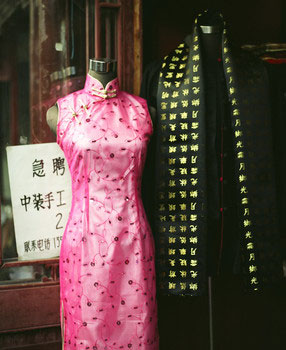 |
||
|
 |
Kimono: Fashioning Culture
Liza Crihfield Dalby's book, Kimono Fashioning Culture, is the first comprehensive English-language study which traces the history of the Japanese kimono and the continuity of its characteristic elements from the dress's origin to the present day. Unlike previous publications, the author offers more than just a historical survey of the kimono as Japan's national dress. Since clothing is considered to be one of Japan's most unique, concrete and traditional cultural manifestations, Dalby has taken up the kimono as away of exploring the inter-relationship between this traditional women's dress and the social, historical, artistic and aesthetic aspects of Japanese culture that it has come to embody throughout history. In pursuit of her aim, to illustrate how the kimono's status in Japanese society has been dependent on social rank, time periods and foreign influences, it is the author's challenge to reconstruct the social and aesthetic meanings attached to the kimono, to reveal how, why and when it was worn. By providing a detailed analysis regarding the kimono's origin, reasons for its rise to popularity, stylistic changes, and decline in the twentieth century, Dalby presents the reader with an insightful and thought-provoking study of the kimono as a system of meanings that extends into the areas of history, culture, art and ideology. The book is divided into three parts and each part consists of three chapters. Part I, "Clothing and Culture," explores the history of the kimono, as well as the kimono's theme and its variations. The author offers a comprehensive overview regarding the history of the kimono, from its Chinese origin to its adaptation to Japanese social and aesthetic impulses, which converted a simple, casual robe-like prototype into the elaborate, elegant ceremonial wear as it has been officially known from the Heian period (794-1185) onward. In this first section of the book, in terms of the kimono's history within Japanese culture, the author's most significant contribution is her discussion of the kimono in the Meiji period (1868-1912), a time when Western influences penetrated all areas of Japanese life and culture, but especially clothing. Dalby describes in great detail the challenge which the Japanese kimono had to face when it had to compete with Western clothing. It became almost extinct in the early Meiji period, but regained its popularity and status as Japan's traditional and official women's dress again in the late Meiji period, when Japan was in search of her national identity. The kimono was able to provide access to this identity. Part II, "Kimono in the Modern World," explores the meanings of the kimono as a cultural system. In this section, Dalby examines the different styles of kimono, the various ceremonial and public occasions for wearing a kimono, as well as the meaning of its unique designs and colour schemes in regard to a woman's age and stage in life. Her key point is that clothing carries messages that reflect its society and era, and that clothing reacts to changing social conditions by incorporating new elements, shifting forms, and modifying traditional styles. However, clothing's messages are silent and culturally coded so that they can only be understood by people who share the same cultural knowledge. In terms of the kimono, it is coded for messages about age, gender, season, formality, occasion, social rank and wealth, which are all readily understood by the Japanese. Part III, "Kimono Context," addresses the first true emergence of the kimono as a glorious dress in the Heian period. The author provides an in-depth explanation regarding the pattern and colour schemes of a kimono, as well as instructions as to how to wear one. This chapter ends with various illustrations from Moronobu's Fashion Magazine, depicting various kimono patterns as a way of exemplifying the tastes of seventeenth century Japanese society. Mary Crihfield Dalby's book, Kimono: Fashioning Culture, makes a valuable contribution to the study of clothing as a form of material culture and its status in both past and present Japanese society. The strength of this book is that it is conceptual, focusing not only on the kimono as a form of dress, but relating the kimono's role to the social history, art, aesthetic principles and cultural production within Japan. University of British Columbia, Vancouver, Canada MONIKA DIX Copyright University of British Columbia Summer 2003 |
Copyright 2025 Chinaitol.com All rights reserved.
|
 KIMONO: Fashioning Culture. By Liza Crihfield Dalby. Seattle (Washington), London (UK): University of Washington Press. 2001. xi, 384 pp. (B&W illustrations, B&W photos, coloured illus.) US$24.95, paper. ISBN 0-295-98155-5.
KIMONO: Fashioning Culture. By Liza Crihfield Dalby. Seattle (Washington), London (UK): University of Washington Press. 2001. xi, 384 pp. (B&W illustrations, B&W photos, coloured illus.) US$24.95, paper. ISBN 0-295-98155-5.